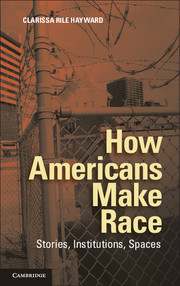2 - Black Places
Published online by Cambridge University Press: 05 June 2014
Summary
It is only a slight exaggeration to say there are as many definitions of narrative as there are examples: definitions that range from the relatively narrow to the exceedingly expansive. Those who favor a definition toward the narrow end of the spectrum argue that to engage in what James Phelan calls “narrative imperialism” – to define more and more discursive forms as narratives – is to empty the category of meaning. The point is well taken. My schedule of meetings for today is not a narrative. My course syllabus is not a narrative. My curriculum vitae is not a narrative. Nevertheless, in this chapter, I intend to err on the side of expansiveness in my thinking about racial identity narratives by suggesting that not only novels and films, but also texts as seemingly (to recall Jerome Bruner’s term) “paradigmatic” as an early American real estate textbook, have an important narrative logic.
Consider a prototypical narrative, one that would fit even the most restrictive of definitions: D. W. Griffith’s notorious 1915 film The Birth of a Nation. Based on Thomas Dixon’s novel The Clansmen, the film is set on the Cameron Plantation in Piedmont, South Carolina, where benevolent masters and happy slaves live together in a “quaintly way that is to be no more.” The South’s defeat in the Civil War changes everything. Freed former slaves, egged on by carpetbaggers and black Union soldiers, roam the Southern streets, terrorizing innocent whites. They take over the polls and Congress, and they even, as one dramatic title card announces, pass a bill “providing for the intermarriage of blacks and whites.” Finally, just when it seems all is lost (the young Cameron daughter jumps off a cliff to escape rape by a black man), the Ku Klux Klan comes to the rescue and conquers the rebels. Order is restored.
- Type
- Chapter
- Information
- How Americans Make RaceStories, Institutions, Spaces, pp. 42 - 80Publisher: Cambridge University PressPrint publication year: 2013



